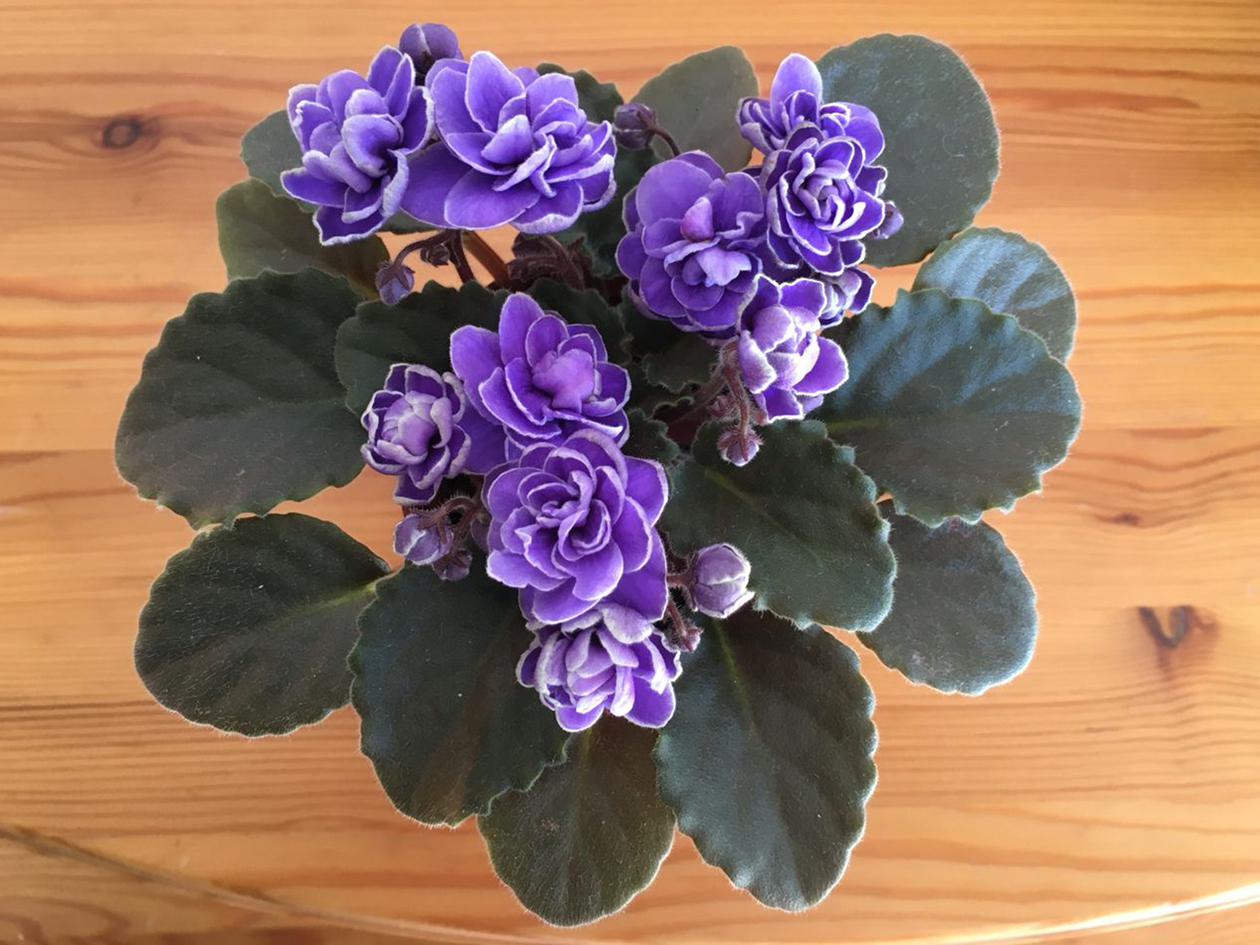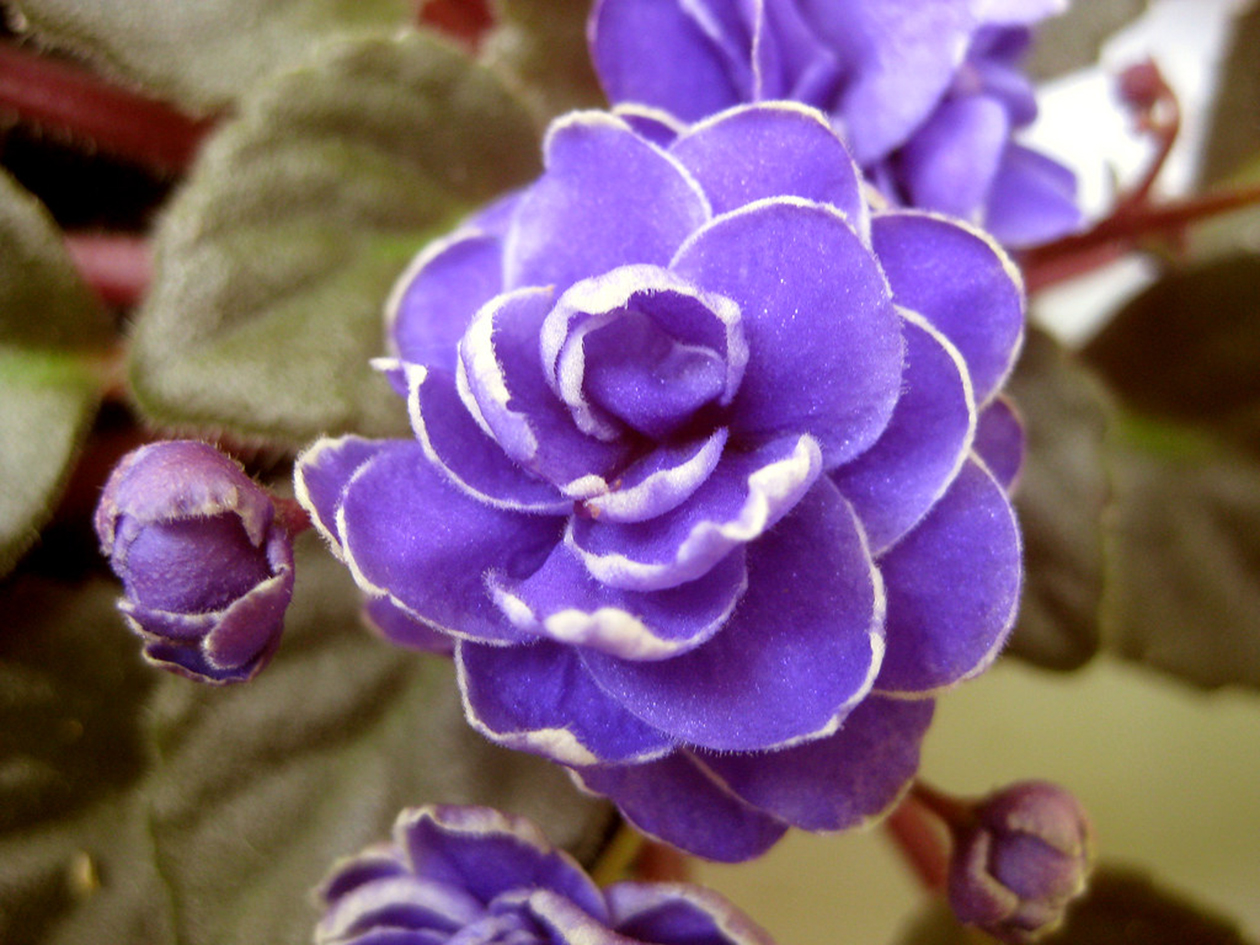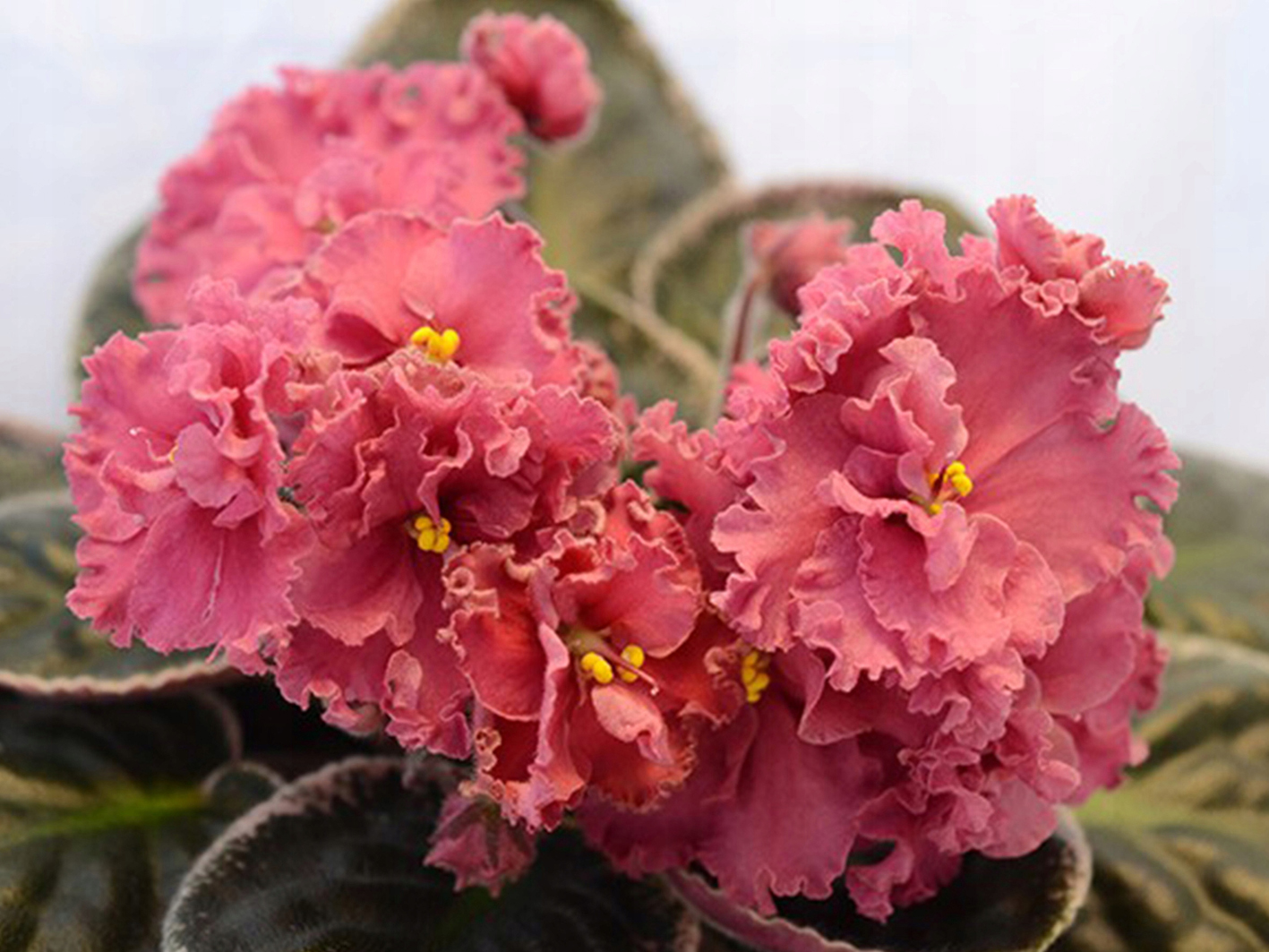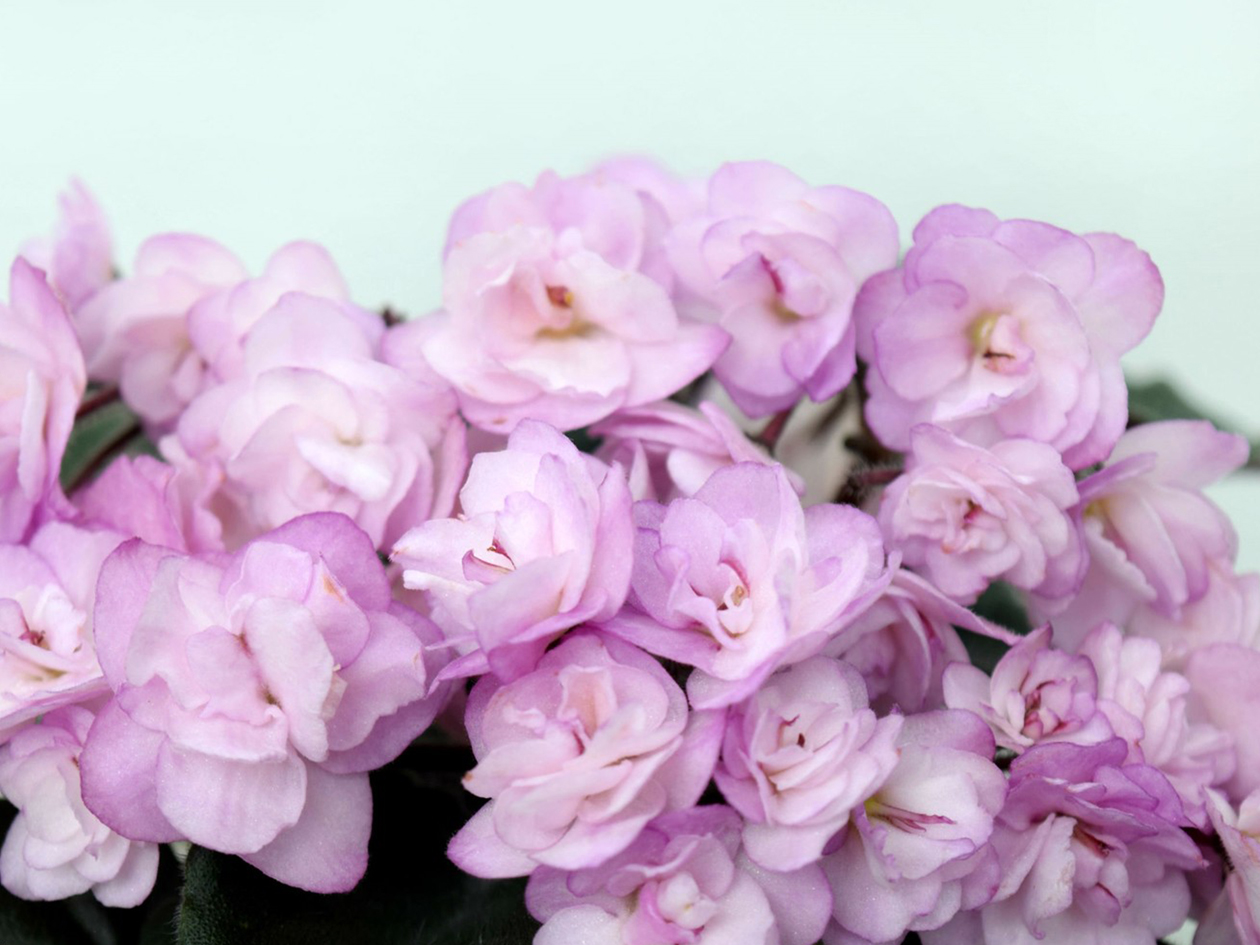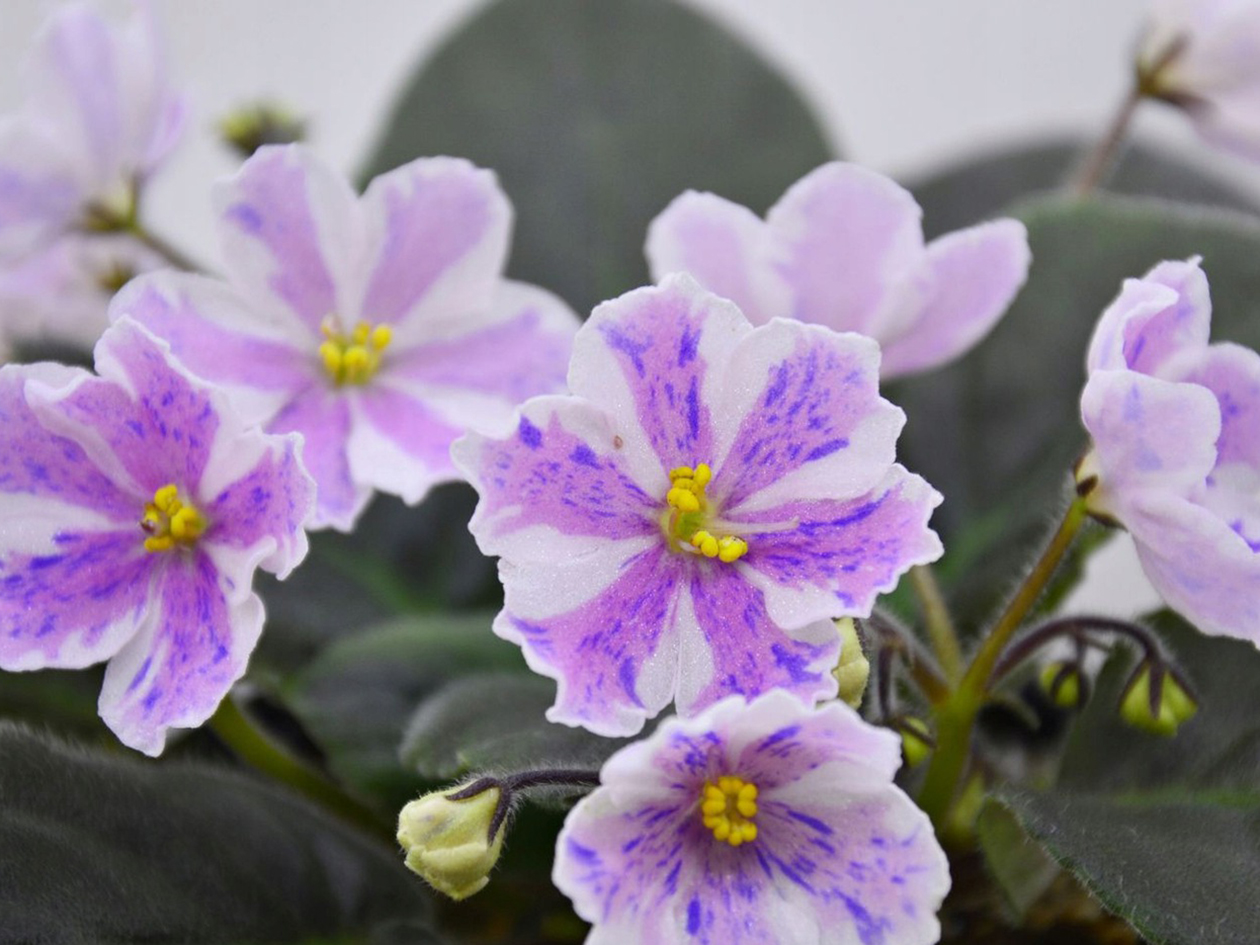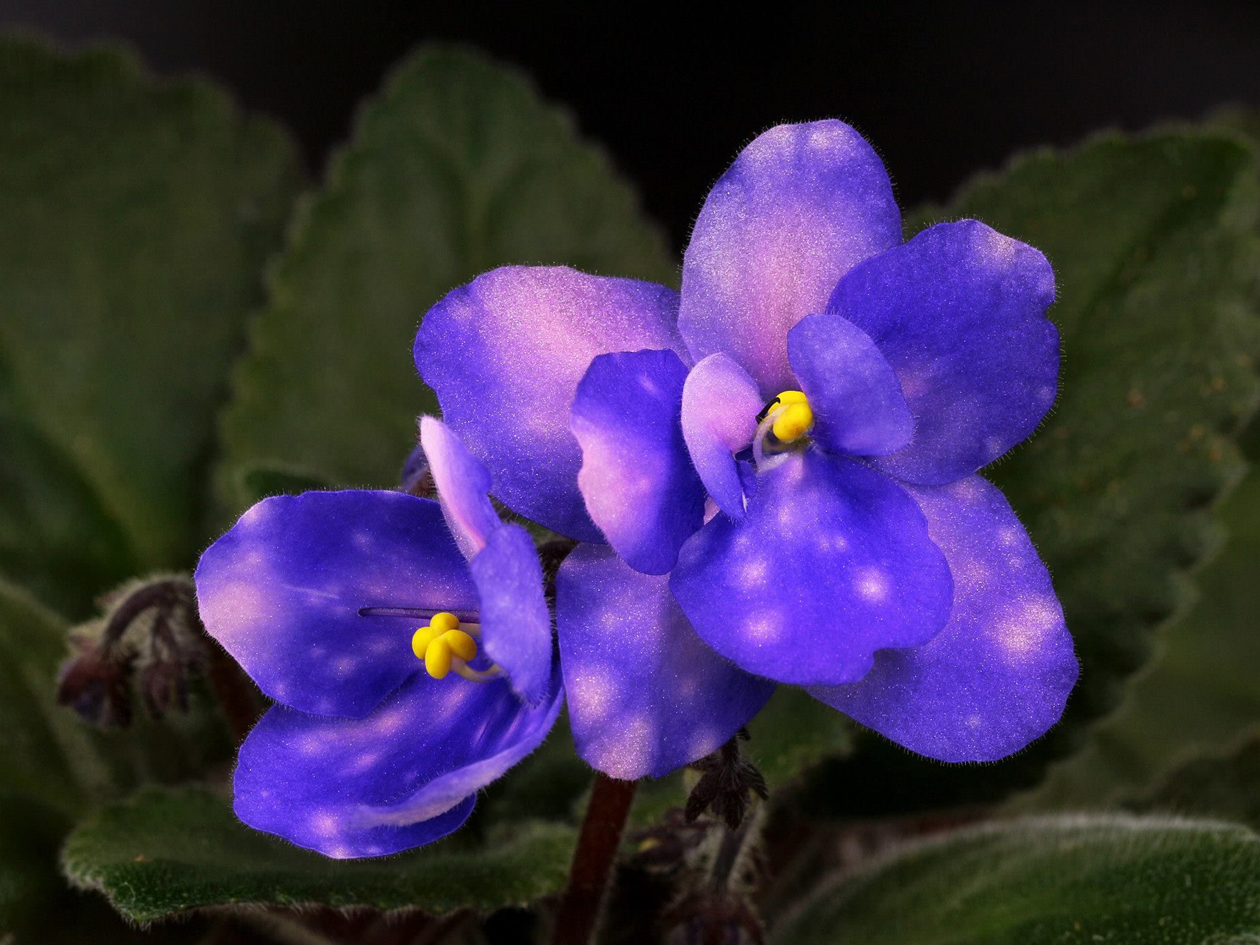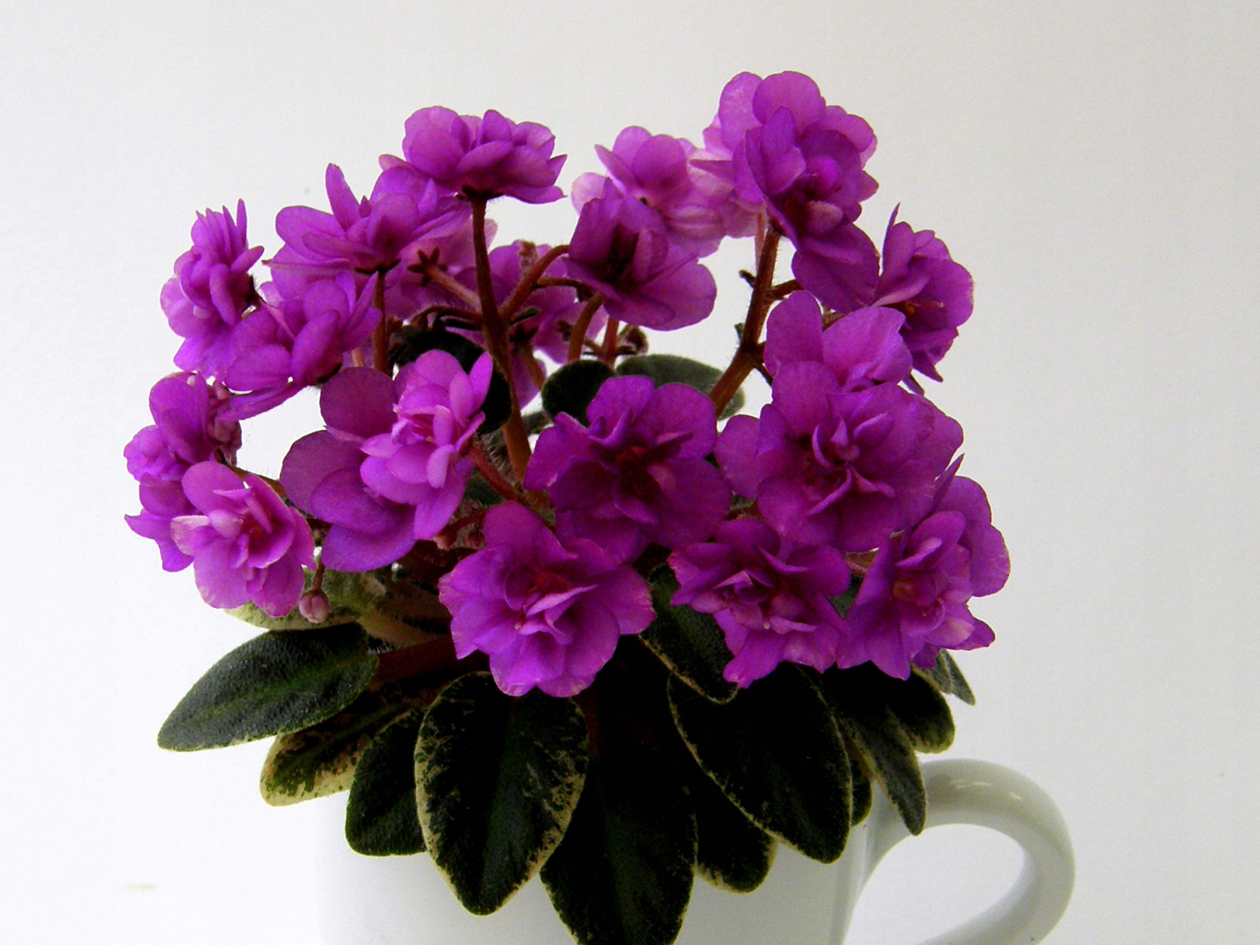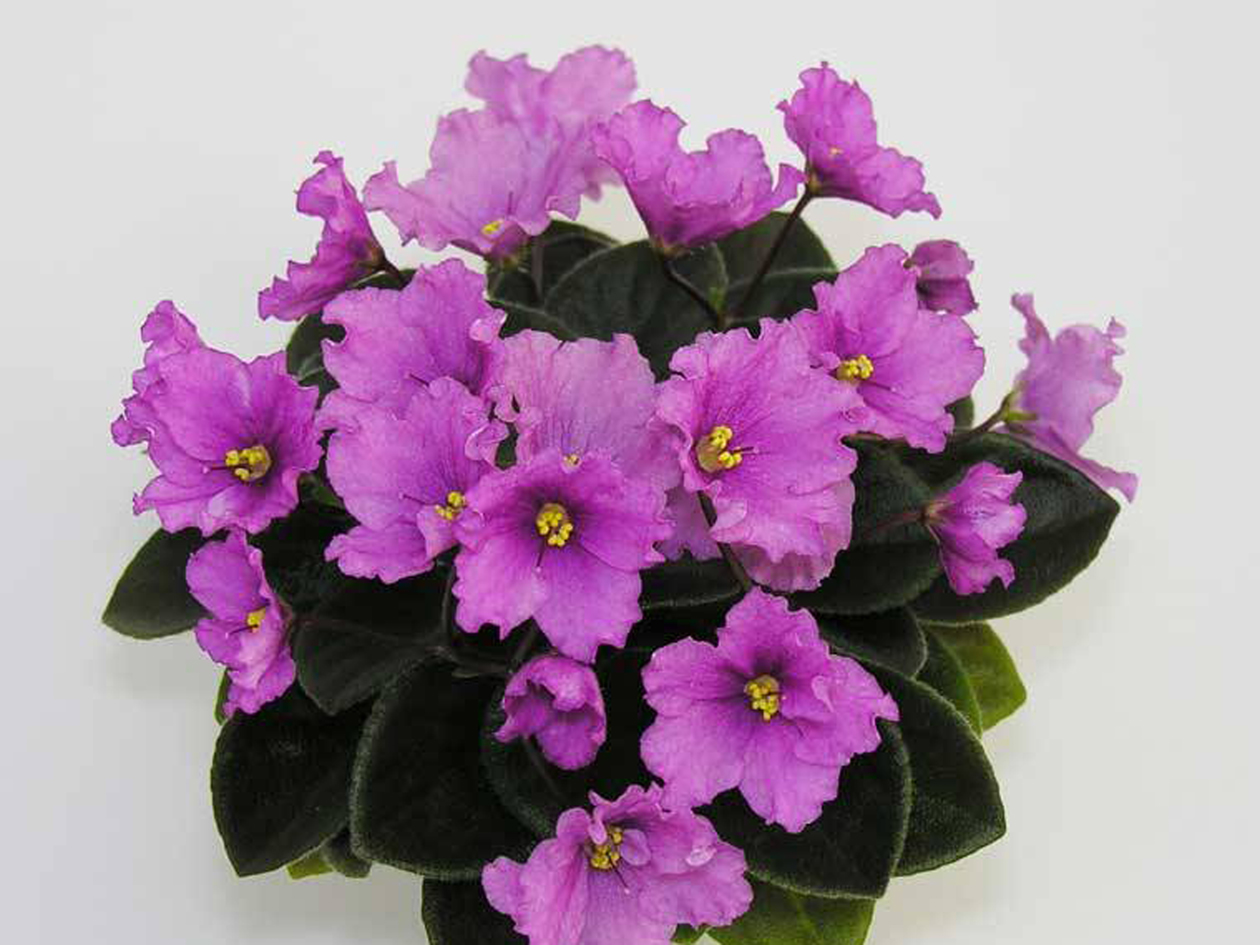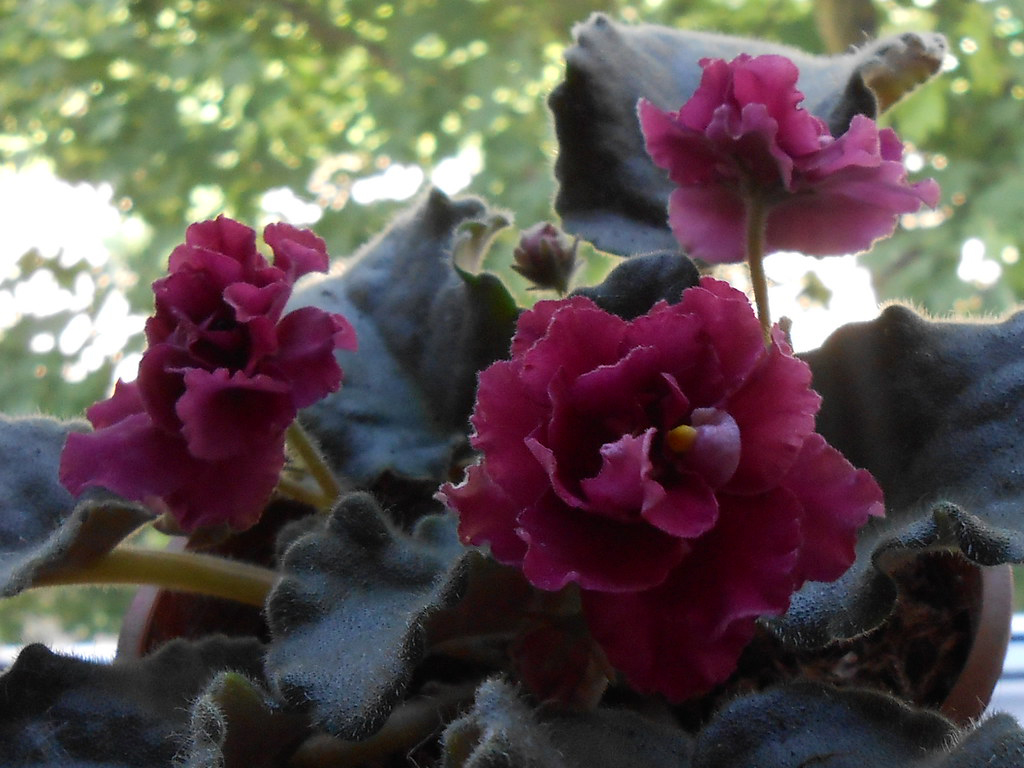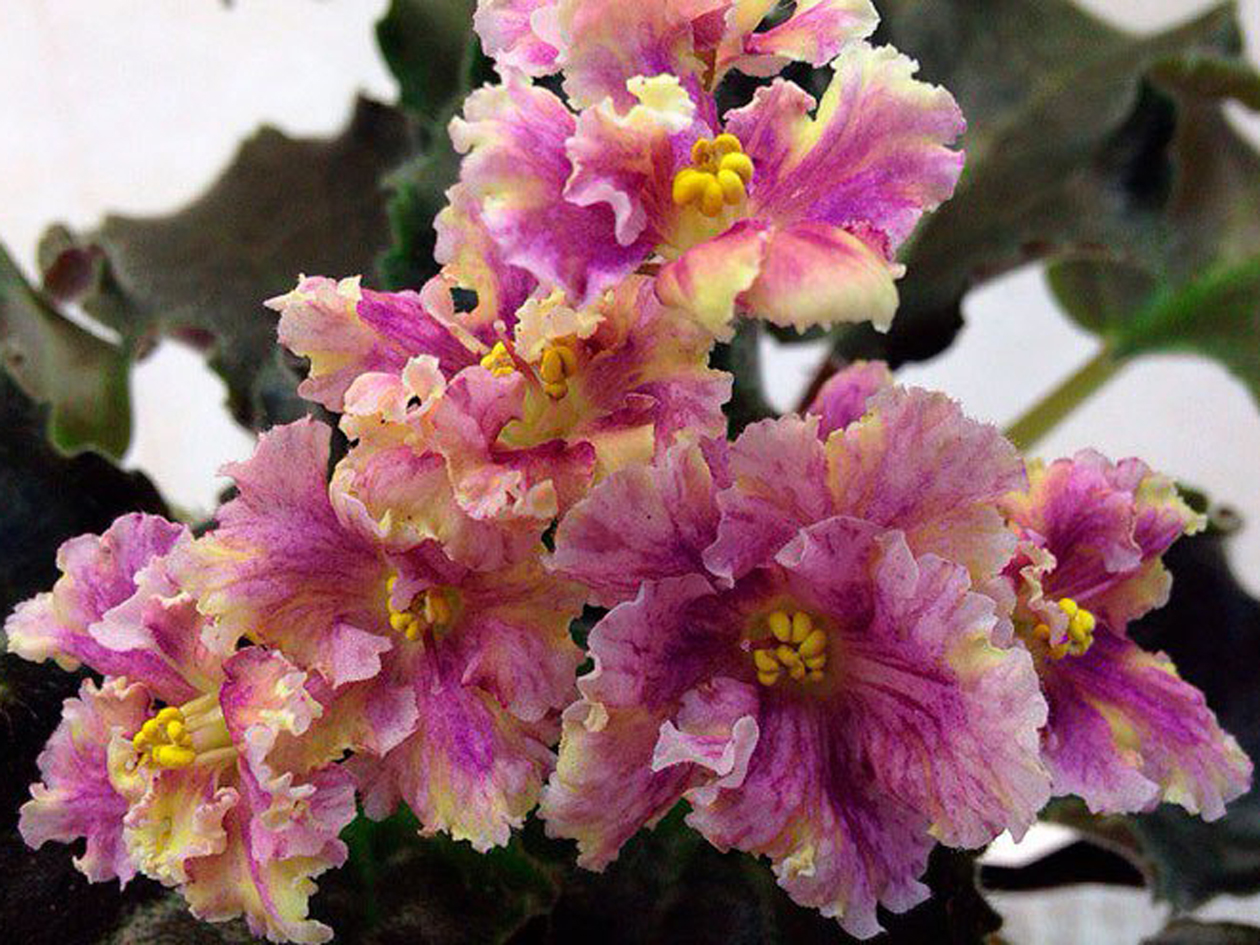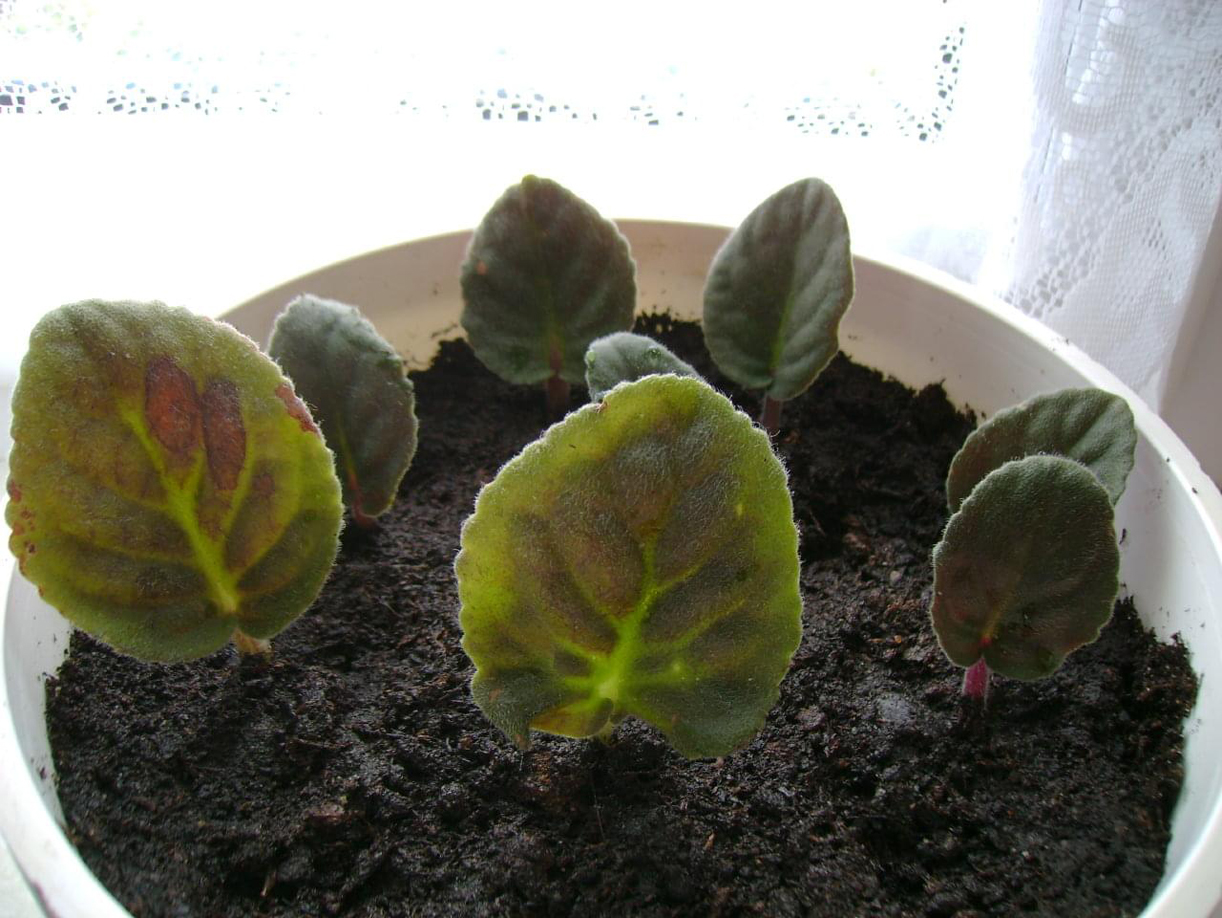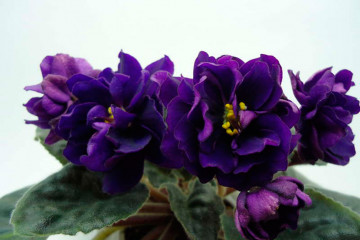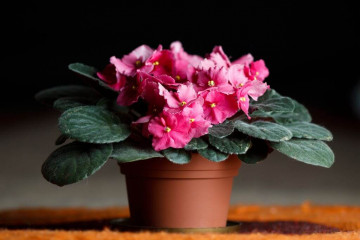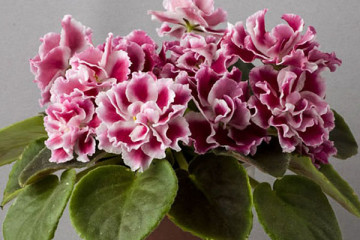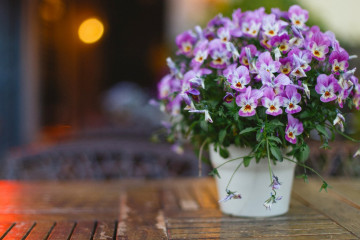Violet Ness Crinkle Blue - plant features
Content:
Among the species of Saintpaulias, there are varieties with the most unusual shapes and color of inflorescences. One of these varieties is Ness crinkle blue. It differs not only in the beauty of deep blue double flowers, but also in continuous flowering. To admire such beauty all year round, you do not have to create special conditions for the plant, since the variety is very unpretentious.
What Saintpaulia looks like Ness crinkle blue
This variety of Saintpaulia stands out favorably for its external characteristics.
It will be equally interesting to learn about the origin of the variety, as well as about other varieties from this group.
Description
Saintpaulia Ness crinkle blue belongs to the semi-miniature varieties. The size of the rosette, flowers and leaves is average. The plant is distinguished by long flowering with intervals of 1-2 months.
The leaves are dark green, with a jagged edge and a sharp tip. Double flowers, petals are arranged in several layers. The color of the inflorescences is blue with a thin white rim along the edge. During flowering, the peduncles bend under the weight of the inflorescences, lie on the outlet and cover it almost completely.
History of origin and species
Saintpaulias are also called Uzambara violets. Both names are associated with the origin of the plant. For the first time, the flowers were seen in the region of the Uzambara Mountains (Africa), and they were discovered by a local official, Saint-Paul Hiller. He gave the seeds to one of the prominent botanists of that time - Hermann Wendland, who gave the flower the name Saintpaulia in honor of its discoverer. He also attributed the plant to the numerous Gesneriaceae family.
Crinkle blue and many others were bred by breeder Don Ness. At first, as a hobby, he was engaged in crossing gloxinia, and became interested in Saintpaulias after visiting an exhibition of Usambara violets in Sao Paulo. The breeding was so successful that new varieties spread throughout the continent and soon gained worldwide fame.
Features and characteristics of Ness varieties
As a result of many years of work, Don Ness presented the world with many varieties of Saintpaulias. Some of them deserve special attention. For example, such as the uzambar violet ness orange pekoe or antique red.
Crinkle blue
Differs in almost continuous flowering. Terry flowers resemble miniature blue roses. Violet is very unpretentious and easy to breed.
Orange pekoe
Usambara violet Ness Orange Pekoe has double or semi-double flowers of deep coral shade.
Inflorescences look very decorative against the background of creamy green, and sometimes green-pink leaves.
Satin rose
Terry flowers with a delicate white-lilac color that changes from the middle to the edge.
The peculiarity of the variety is the crown arrangement of the inflorescences. The leaves have a pronounced ribbing and a jagged edge.
Spring blush
Simple and semi-double flowers consist of white petals with pale pink stripes and purple spots.
Saintpaulia breeders call a similar color chimera. The plant is very easy to care for, it has a long and abundant flowering.
Blueberry puff
The blue flowers of this variety seem to be painted with white specks of paint. Outwardly, it looks like the glare of sunbeams on the petals. The inflorescences are dense, up to 15 flowers can be collected on one.
Tiny Flame
Delicate purple double or semi-double flowers contrast against the background of dark foliage.
The peculiarity of the variety is a creamy white border along the edge of the leaves.
Pink confetti
This compact variety of Saintpaulias has an original color of flowers.
White petals around the edges seem to be covered with splashes of fuchsia paint.
Red velvet
The flowers are simple, with a wavy edge of the petals.
The velvet scarlet color brightens slightly from the middle to the edge. The violet is unpretentious to care for and simply multiplies.
Angel face
The flowers are shaped like miniature bells.
The petals with a slight waviness along the edge have a fuchsia tint.
Antique red
Against the background of dark green foliage, double flowers of rich red color, similar in shape to miniature roses, stand out brightly. The violet blooms almost all year round.
Up to 7 flowers bloom on one peduncle at the same time.
Fantasy gold
The color of the double flowers contains yellow, pink and fuchsia shades at the same time.
On each petal, they are combined arbitrarily. Leaves are deep green, almost black.
Blueberry kiss
The variety is distinguished by large flowers of an original color.
The snow-white center passes into the blue edges of the petals. The violet blooms for over 6 months. The inflorescences are very large.
Care features
Saintpaulias are unpretentious indoor flowers. To admire the beautiful flowering almost all year round, it is enough to follow a few rules regarding care and maintenance:
- Watering is carried out in a pallet. To do this, use settled water at room temperature.
- The temperature is maintained at the level of 20-23 ° C, the main thing is not lower than 18 ° C.
- Continuous and intense lighting is needed, but not direct sunlight.
- It is better to buy soil ready-made, especially for Saintpaulias.
- Mineral dressing is applied in the spring-summer period, once every 10-14 days.
Caring for Saintpaulias is pretty simple. The main thing is to prevent waterlogging of the soil and provide the plants with good lighting.
Reproduction
Most often, Saintpaulias are propagated by leafy cuttings. Only healthy and not too young leaves should be used.
Procedure:
- The stalk is placed in water until the roots appear.
- Then it must be rooted in a substrate of peat and sand mixed in a 2/1 ratio.
- After the appearance of 2-3 leaves, a pick is carried out into separate pots.
For large plants, when transplanting, the method of dividing the bush is used. Seed propagation is a rather laborious and long process, which is relevant only for obtaining plants of a rare variety.
When and how it blooms
Saintpaulia or violet, Ness crinkle blue has a very long flowering period. Almost all year round, the rosette is covered with lush terry inflorescences.
During the flowering period, the plant must be properly looked after. Top dressing should be applied at least once every 10 days. It is necessary to prevent temperature changes and protect the flower from drafts.
Transplant after purchase and during reproduction
The technology of transplanting Saintpaulias is practically no different from the standard breeding technique for indoor flowers. There are several important points to pay attention to:
- The drainage layer at the bottom should be ¼ of the volume of the pot.
- It is important to ensure that there are at least 3 drainage holes in the planting container.
- It is better to use ready-made soil or mix garden soil with sand and peat in proportions of 2/1/1.
Possible growing problems
The reasons for the deterioration of the appearance of Saintpaulia can be improper care, attack by pests or diseases.
Improper care
Errors in care include excessive watering, non-observance of light and temperature conditions. Signs that the plant is experiencing discomfort are the appearance of spots on the leaves or their wilting.
Pests and diseases
The Usambar violet ness crinkle blue is susceptible to a number of diseases, such as late blight, fusarium, powdery mildew and various rot. The most common plant parasites are aphids and cyclamen mites. At the first signs of damage to the flower, the leaves and soil should be processed, and sometimes transplanted into another pot.
Saintpaulia Ness crinkle blue is a wonderful variety presented to the world by breeder Don Ness. Such species as uzambar violet orange pekoe, satin rose and many others also bear his name. Subject to simple rules for care and maintenance, these unpretentious flowers will delight you with beautiful flowering almost all year round.
